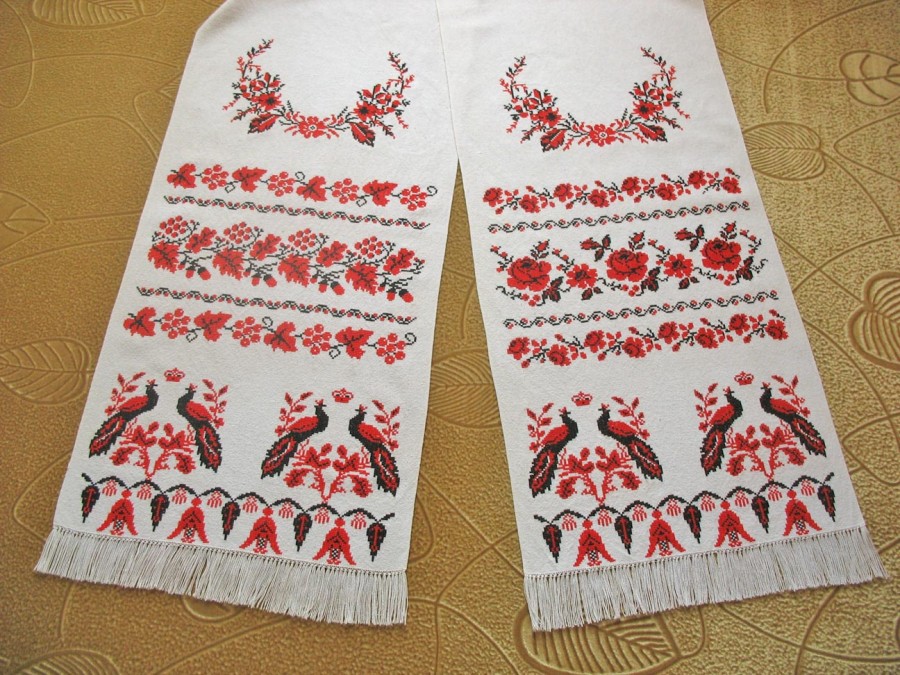 The custom of decorating clothing with embroidered symbolic ornaments has existed since very ancient times. Science knows facts that indicate that embroidered clothing was worn many centuries and even millennia ago by various peoples, including the Scythians, who flourished long before our era.
The custom of decorating clothing with embroidered symbolic ornaments has existed since very ancient times. Science knows facts that indicate that embroidered clothing was worn many centuries and even millennia ago by various peoples, including the Scythians, who flourished long before our era.
In the nineteenth century, an ancient cultural civilization was discovered, which, according to modern scientific data, flourished from the sixth to the third millennium BC. In our country, it is called Trypillya, because at the end of the nineteenth century, Vikenty Khvoyka, an archaeologist, found an ancient settlement of this civilization near the village of Trypillya in the Kyiv region. Among the numerous artifacts of that period, objects with ornaments applied to them were found, which in Ukrainian embroidery are called "plotanka" and "Bezkinechnyk". These and other facts allow us to assume that the history of Ukrainian ornaments originates from the ancient Trypillya culture.
Symbolism of color and embroidery patterns
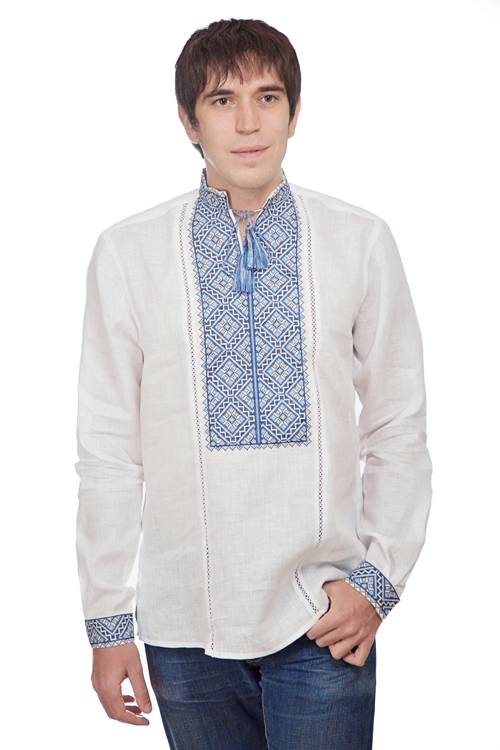 Embroidered clothes are loved and popular throughout Ukraine, but each region has its own traditions of using colors and ornaments. Due to regional differences, Ukrainians have a rich variety of patterns, techniques, and color combinations for creating embroidered clothes. However, the symbolism of color and embroidery ornaments remains common to embroidered clothes from all regions of Ukraine.
Embroidered clothes are loved and popular throughout Ukraine, but each region has its own traditions of using colors and ornaments. Due to regional differences, Ukrainians have a rich variety of patterns, techniques, and color combinations for creating embroidered clothes. However, the symbolism of color and embroidery ornaments remains common to embroidered clothes from all regions of Ukraine.
White is the most popular color for the fabric used to make embroidered shirts. It symbolizes tenderness, health, youth, and purity.
Black is the shirt color for an elderly man, a pessimist, perhaps a widower. In the worst case, it is a shirt option for a deceased person.
Older women wore shirts made of blue fabric. Young girls could sew embroidered shirts from blue fabric before marriage, but they used light colors - blue or sky. Blue was also used for men's shirts, but it was more often combined with red - the color of fire, active actions, energy.
Red embroidery symbolized youth, energy, love, and passion.
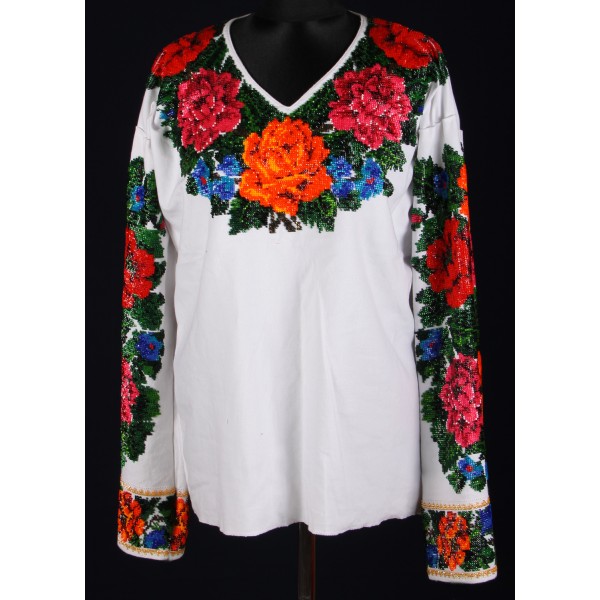 All ornaments inherent in Ukrainian folk embroidery can be divided into three main types: plant, animal (birds, insects), and geometric.
All ornaments inherent in Ukrainian folk embroidery can be divided into three main types: plant, animal (birds, insects), and geometric.
For men's vyshyvankas, geometric ornaments are mostly used, while women's vyshyvankas prefer to be decorated with floral motifs. Ornaments that combine geometric and floral patterns are widespread in all regions. Of course, on a men's shirt, not flowers are embroidered, but plants that symbolize masculine qualities - strength, endurance, wealth. Embroidering a shirt for herself or a loved one, each needlewoman tried to create an ornament that would convey its symbolic properties to the one who would wear this vyshyvanka.
Symbolism of plant motifs
Plant ornaments on Ukrainian clothing demonstrate the colorfulness and rich diversity of the surrounding native nature. This is evidenced by the images of leaves and fruits of grapes, oak, hops, flowers of periwinkle, mallow and other plants. Plant patterns also include the “tree of life”, which is highly respected by Ukrainian craftsmen, and is performed in a stylized form. Each plant ornament has its own magical symbolism.
Oak leaves or branches
According to ancient Slavic mythology, the oak is the sacred tree of the pagan thunder god Perun, therefore it symbolizes male energy, vitality, and active development.
Viburnum branch with bunches of berries
Kalina is very revered in Ukraine, it can be called a symbol of the Ukrainian people. The name of this low, slender tree comes from the ancient Slavic word "circle" - this is how our ancestors called the Sun. In ancient times, the viburnum was revered as a symbol of the fiery trinity - the Sun, the Moon and the stars. The basis of the viburnum ornament are bright red berries, reminiscent of blood, which symbolizes the immortality of the Ukrainian race.
Often in Ukrainian ornaments there is a combination of elements of viburnum and oak. Such an ornament gives a person beauty, health, strength, it was used on embroidery for young men, symbolizing the vital energy of the family.
Blooming poppies
Poppy is considered a reliable amulet that protects the family and household from negative forces and the evil eye. The red color of its flowers means the memory of relatives who died in battles. An ornament with poppies on a young girl's embroidered shirt may mean that there is a fallen warrior in her family, the memory of whom she promises to keep forever.
Bunch of grapes on a vine with leaves
This ornament is very popular in embroidery in northern and central Ukraine. It is more typical of towels, but is often found on embroidered clothes. The symbol of grapes denotes the beauty and joy of family life, happiness from its replenishment.
Mallows
Ukrainian village courtyards have been full of colorful mallows for several centuries. However, these flowers have been decorating Ukrainian life for not so long that they have become part of ancient symbolism. Some researchers of Ukrainian embroidery ornaments believe that this floral motif is relatively recent, therefore no symbolism is inherent in it, and it is embroidered only for decorative purposes. Ornaments with mallows are embroidered in the same way as other floral ornaments, that is, in the form of an endless closed wreath, which means constant rebirth and renewal of life.
Lily flowers with buds and leaves
Ornaments with lilies are very multifaceted in their symbolic meaning. Lilies symbolize purity, innocence, and girlish charm. The pattern of the ornament is designed so that it shows figures of a pair of swans - symbols of love and eternal devotion. Patterns with lilies always include, in addition to flowers, buds and leaves. , Which should symbolize the trinity of birth, constant development and continuity of human life. On wedding embroideries, in the pattern with lilies you can see a cross, which symbolizes the blessing of the young for a happy marriage. Drops of dew over the lily flower symbolize fertilization.
Periwinkle wreath
Used for youth embroidery. Blue flowers on a background of green leaves symbolize development, youth, energy, help in achieving high goals. This ornament is also embroidered on wedding robes and towels. Periwinkle is a climbing plant, and in Ukrainian folklore the word "to curl" for young men means readiness for marriage.
Berehynia
One of the most important ornaments in the embroidery of the Ukrainian people, present on almost all ceremonial embroidery and towels. It is depicted as a flowering tree growing from a flowerpot, which is why it is called the Tree of Life. It symbolizes the unity and interconnectedness of all manifestations of life on Earth.
The listed plant elements of patterns used in Ukrainian embroidery are among the most common. Ukrainian embroidery is very diverse and consists of a large number of traditional ornaments. Modern needlewomen create beautiful embroidery based on traditions and complement them with new patterns that appeared thanks to their imagination and the rich variety of modern materials.

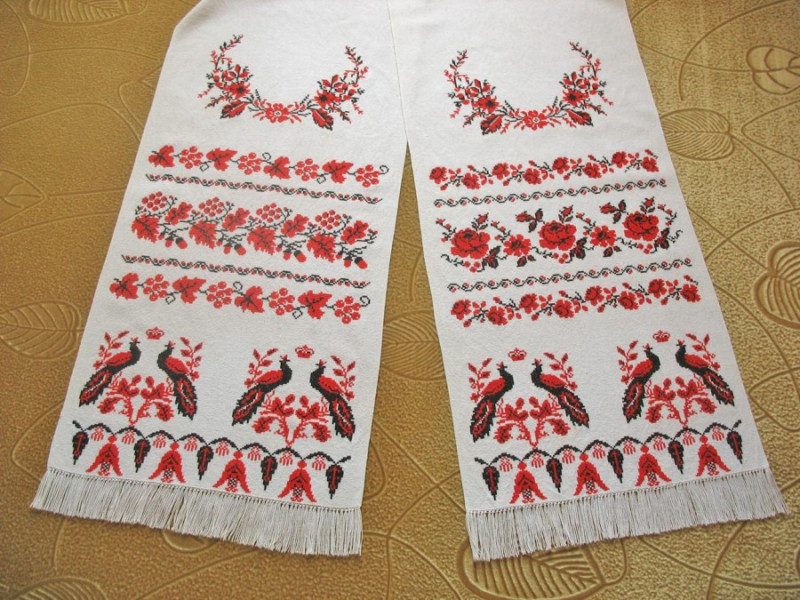
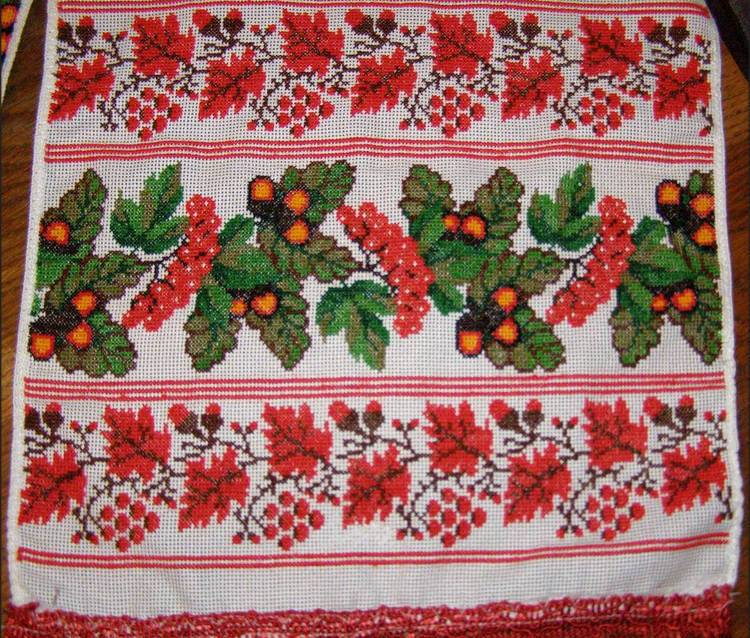
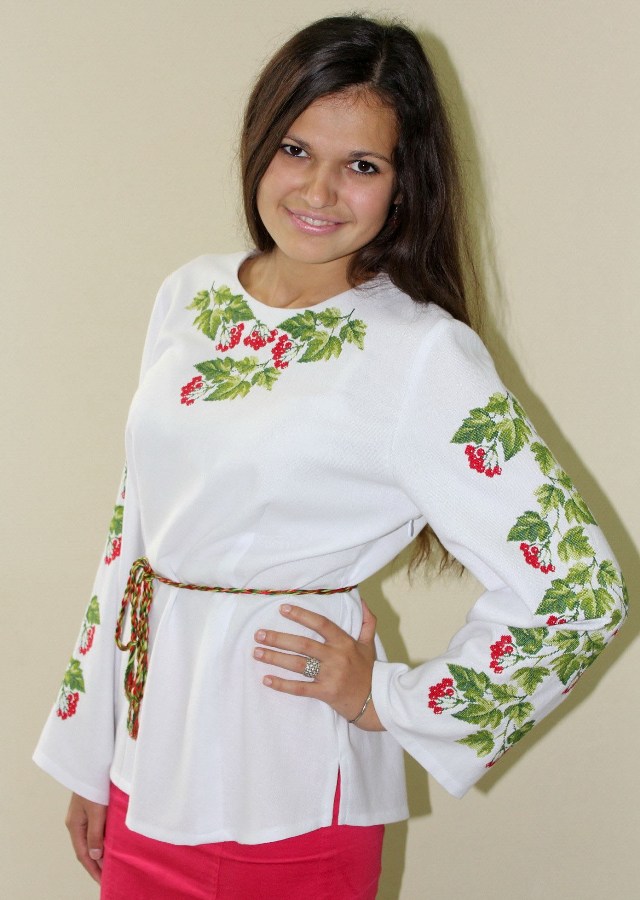
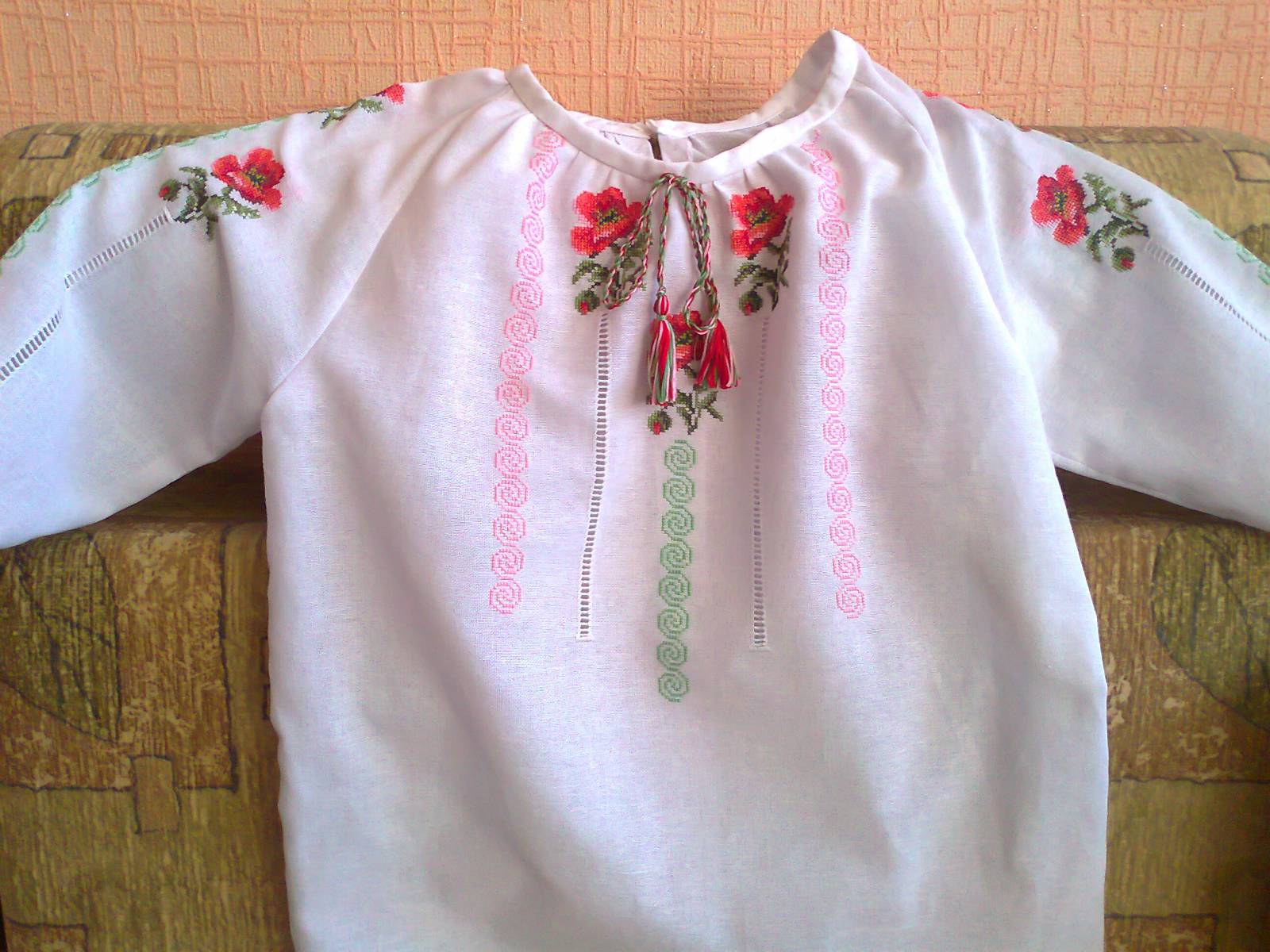
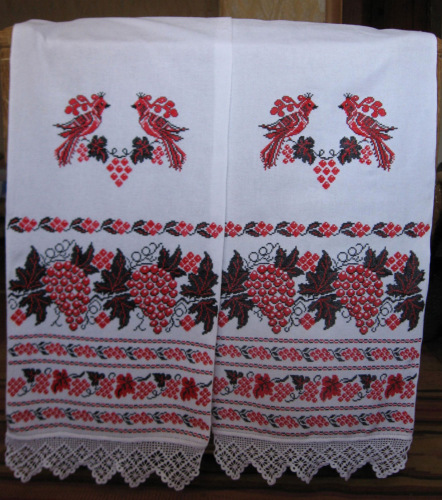
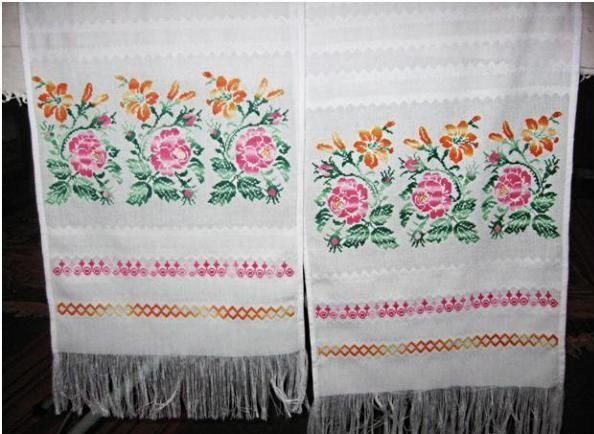
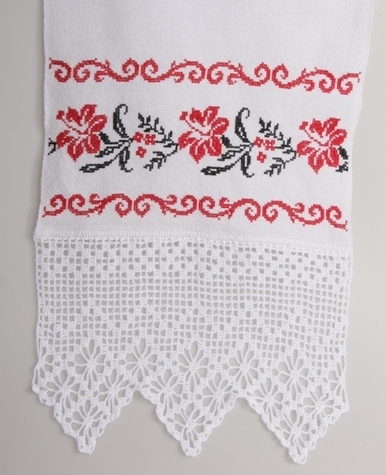
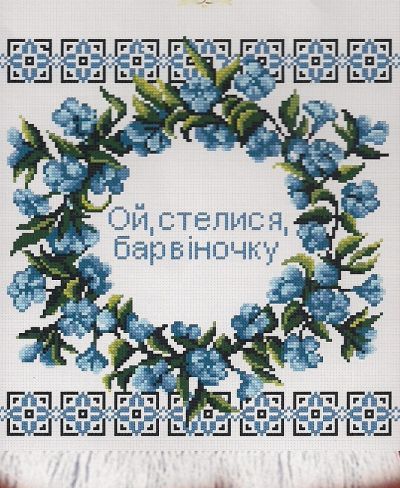
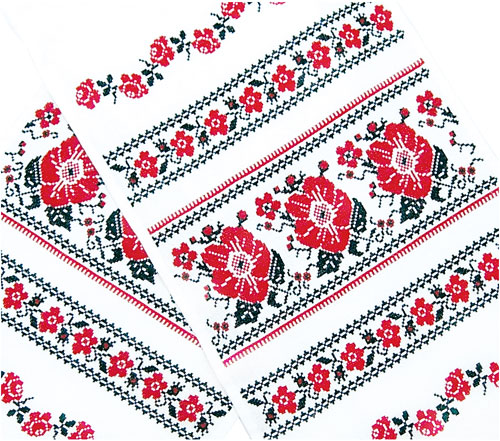
Write a comment